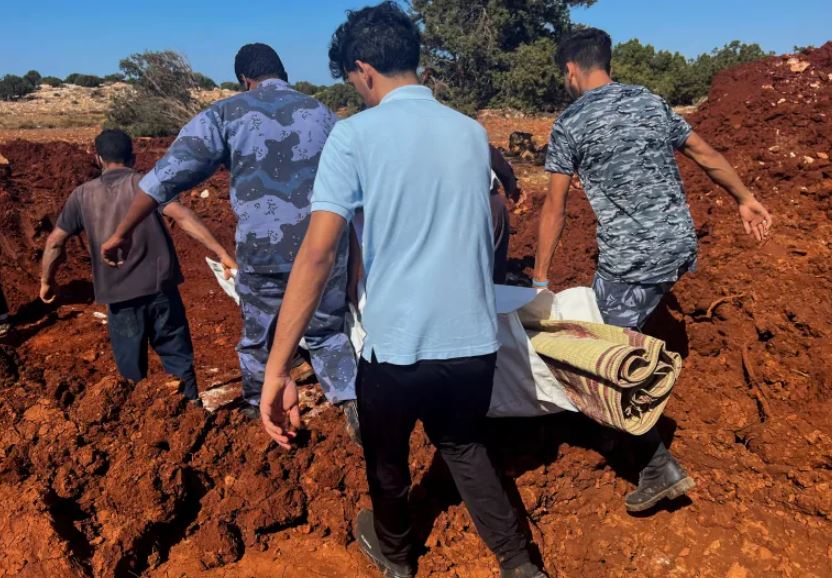Relatives of victims of Libya’s lethal flood on Thursday burried thousands of the dead in mass graves.
According to available statistics, more than 6000 people are beleived to have been killed by the floods.
Hisham Chkiouat, a minister in Libya’s eastern administration said, “The sea is constantly dumping dozens of bodies.”
Morgues and hospitals have been overwhelmed with bodies.
Officials say at least 10,000 people are missing, while 30,000 people are estimated to have been displaced, the United Nations’ International Organization for Migration (IOM) in Libya said on Wednesday.
On Sunday, a deadly storm Daniel- an unusually strong Mediterranean storm caused flooding in towns across eastern Libya, but the worst-hit was Derna.
As the storm roughed up the coast Sunday night, residents said they heard loud explosions when two dams outside the city collapsed.
Floodwaters washed down Wadi Derna, a valley that cuts through the city, crashing through buildings and washing people out to sea.
The deputy mayor of Derna, Ahmed Madroud, told media that “at least 20 percent of the city has been destroyed.”
The storm hit other areas in eastern Libya, including the town of Bayda, where about 50 people were reported dead. The Medical Center of Bayda, the main hospital, was flooded and patients had to be evacuated, according to footage shared by the centre on Facebook.
Other towns that suffered included Susa, Marj and Shahatt, according to the government.
A U.N. official said Thursday that most casualties could have been avoided.
“If there would have been a normal operating meteorological service, they could have issued the warnings,” World Meteorological Organization head Petteri Taalas told reporters in Geneva. “The emergency management authorities would have been able to carry out the evacuation.”
The WMO said earlier this week that the National Meteorological Center had issued warnings 72 hours before the flooding, notifying all governmental authorities by email and through media.
Officials in eastern Libya warned the public about the coming storm but did not suggest the dams could collapse or present an evacuation plan.




















